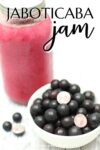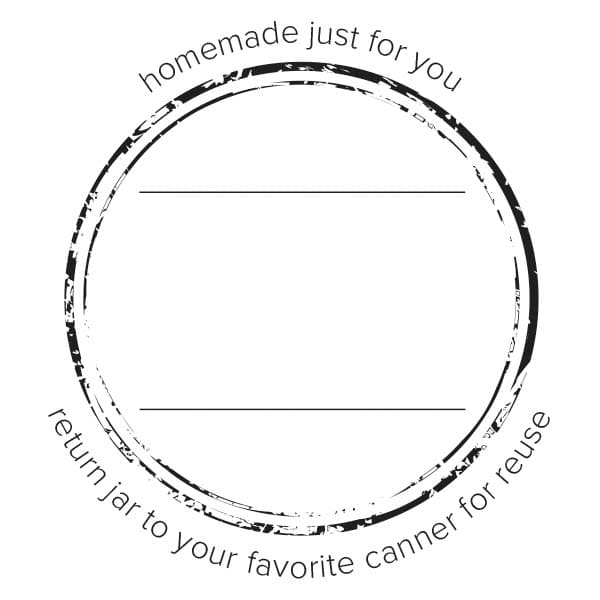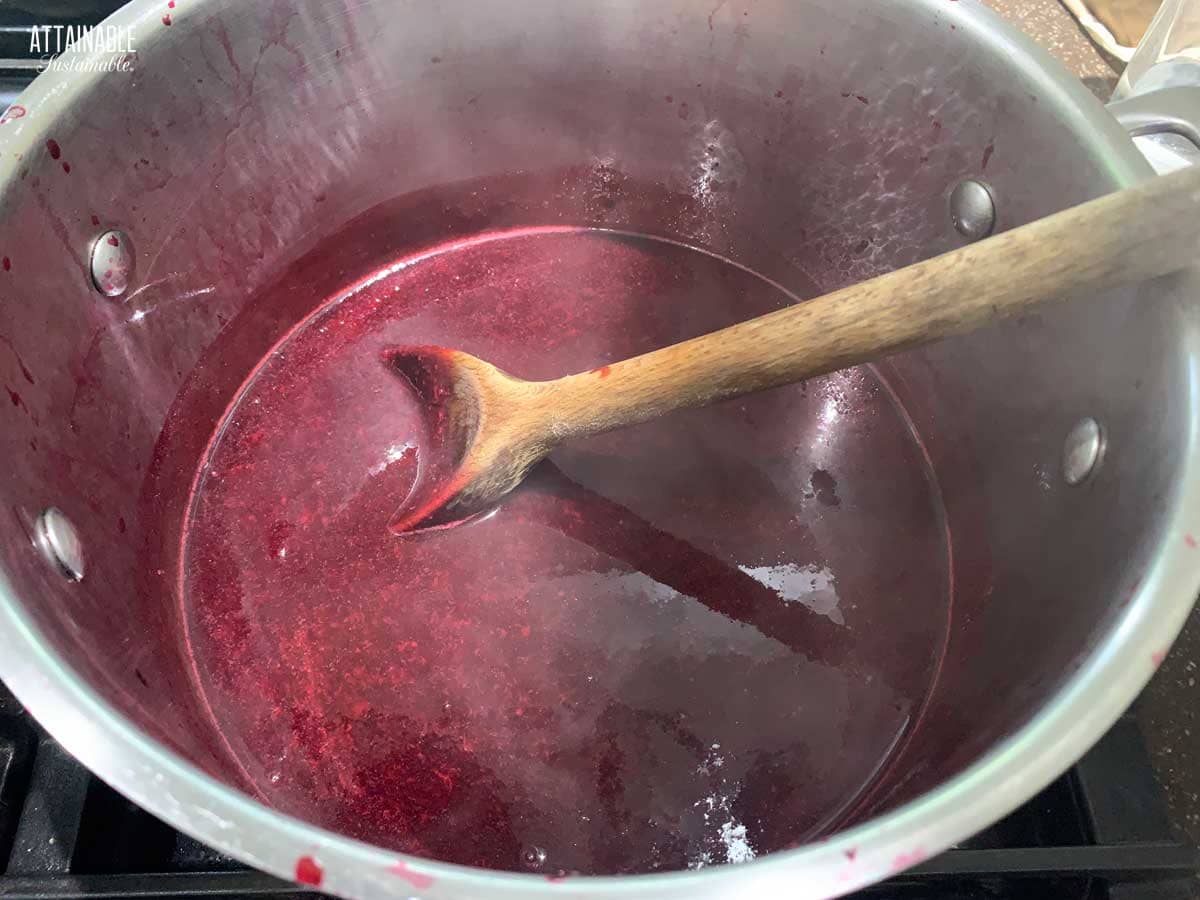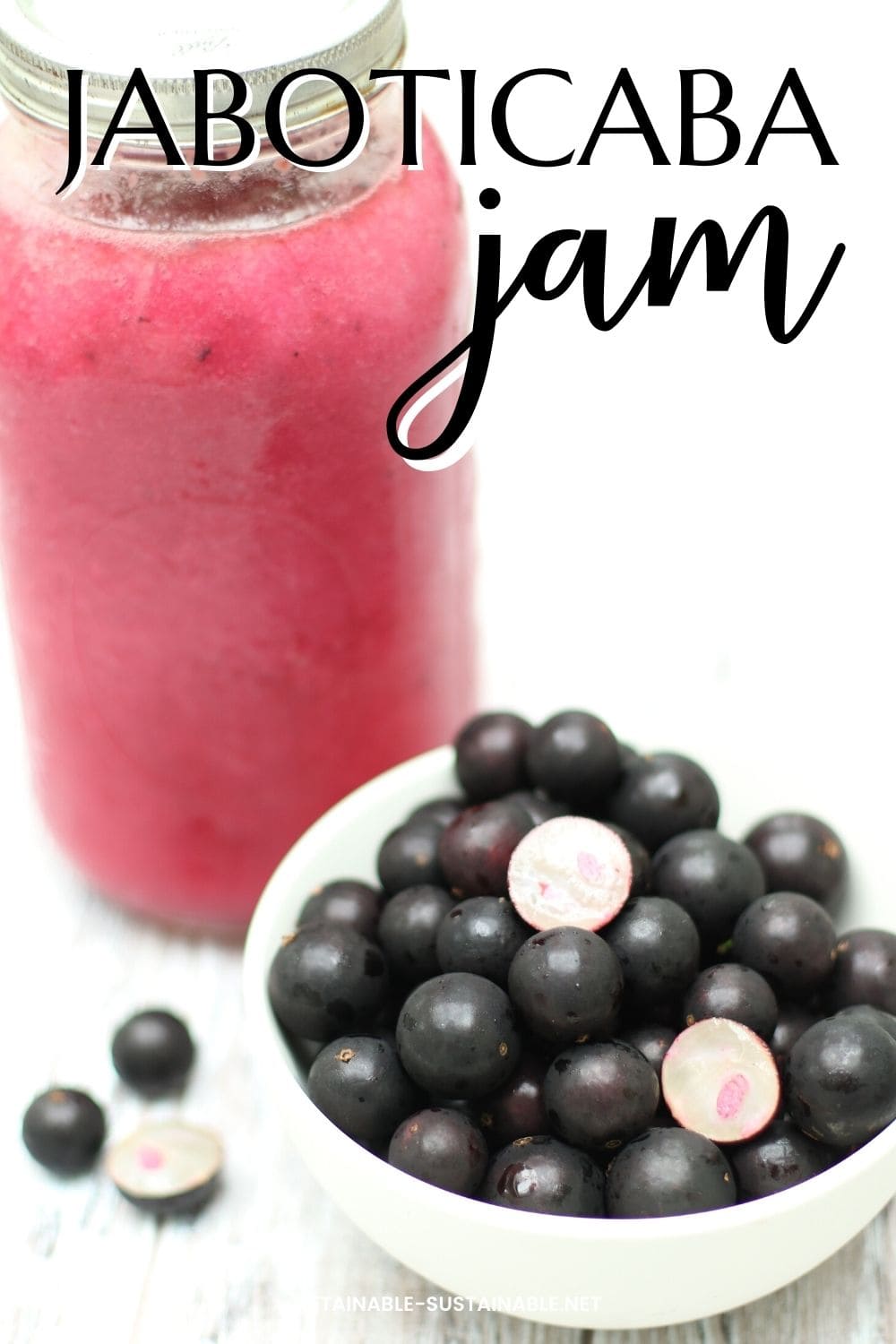This jaboticaba jam is seedless, but pulpier than a clear jelly. It’s one of our absolute favorites; if you’re lucky enough to have access to freshly harvested jaboticaba, be sure to try this.
Another tropical favorite? Passion fruit jelly!
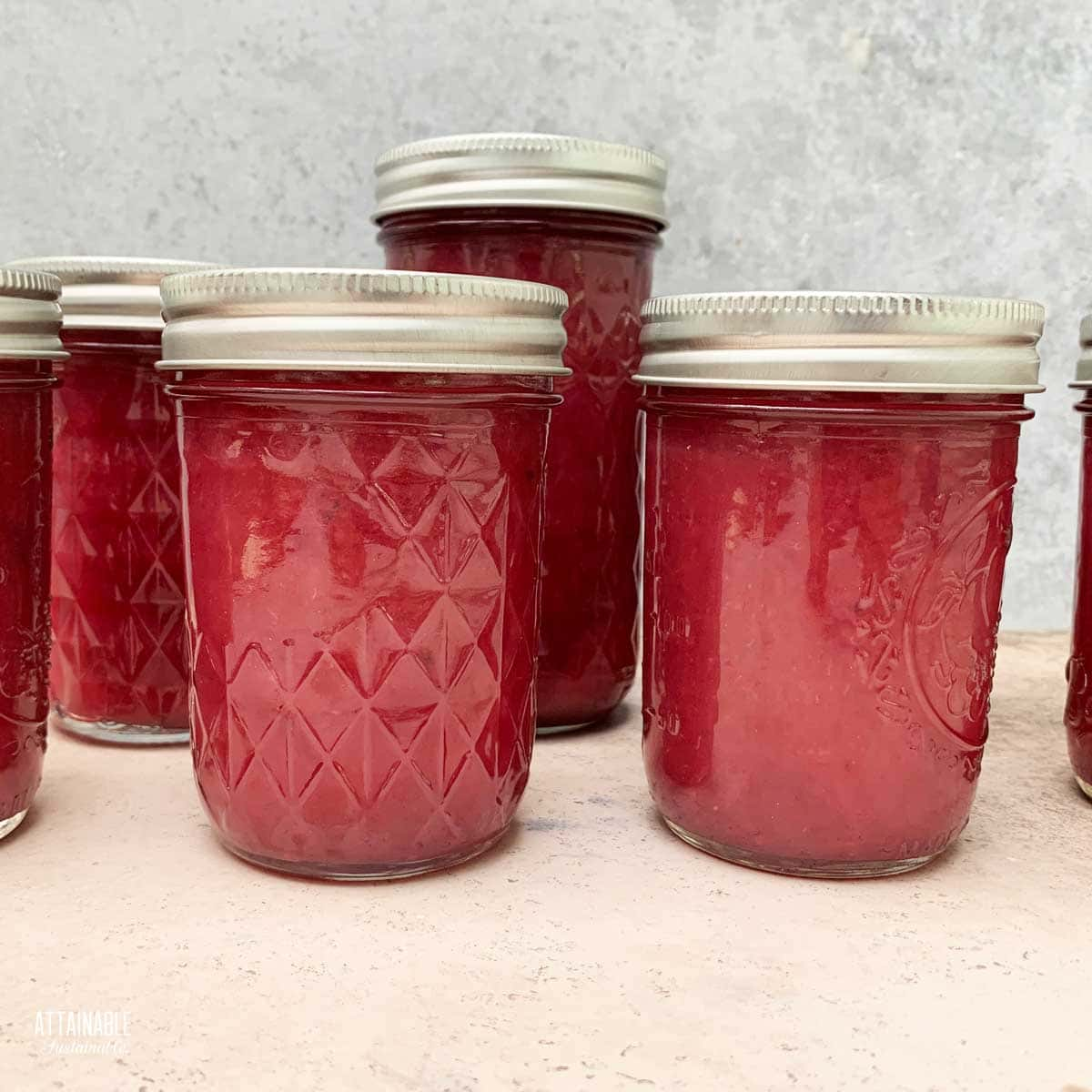
Making jam and jelly at home offers us the opportunity to preserve what’s readily available locally. It also allows for a healthier fruit spread. I use a method for making jam and jelly that allows me to substantially reduce the added sugar. If that sounds good to you, maybe it’s time to learn how to make your own?
Spoiler: it’s easy!
Jaboticaba fruit results in a vividly pink jam that tastes out of this world amazing!
The Handcrafted Pantry

Ready to DIY your pantry with more wholesome ingredients? Check out my ebook, The Handcrafted Pantry! Filled with delicious recipes for some of your favorite condiments, snacks, and toppings, it’s the guide you need to start skipping packaged products and embrace homemade.
What is Jabuticaba?
The astute among you will notice that there is no one right way to spell jaboticaba jabuticaba. Either way seems to be acceptable! This dark purple fruit is native to Brazil and grows in the most amazing manner. The soft grape-like fruit sprouts right from the trunk and branches of the tree, covering them with fruit several times a year.
5 Easy Steps to Transform Your Pantry!
Ready to switch from store bought to homemade? Let me help you make some changes! Grab my FREE five-part guide to getting started.
I’m lucky enough to have a friend here in Hawaii who shares this delicious fruit with me by the bucketful several times a year.
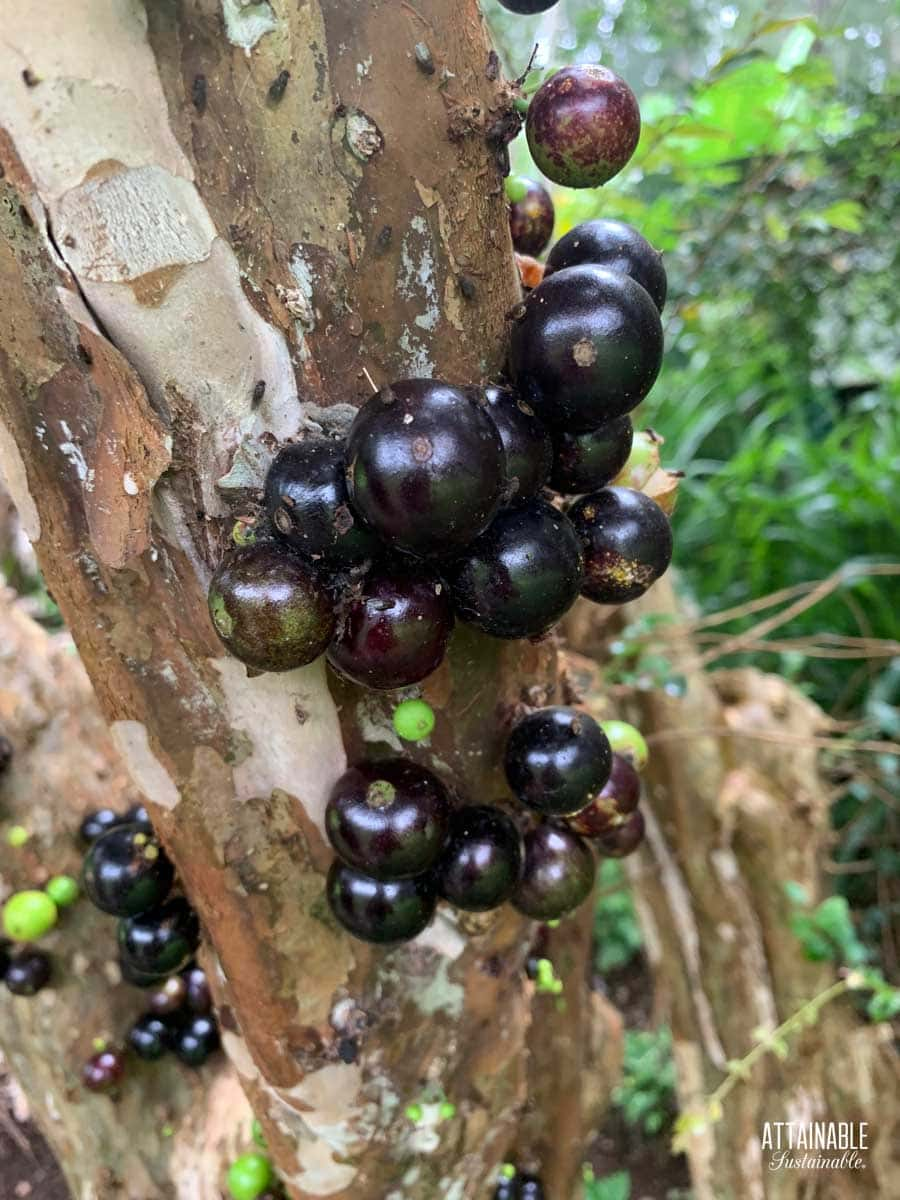
Jaboticaba fruit growing from the tree trunk.
The deep purple skins of jaboticaba fruit are edible, but thick and somewhat sour. The flesh is pale and soft, and harbors a small seed (sometimes several). And they’re high in antioxidants.
What does jabuticaba taste like?
It’s been compared to a muscadine grape; in fact, it’s sometimes called a Brazilian grape. Bite through the skin and you’ll get a burst of flavor from the sweet, juicy flesh.
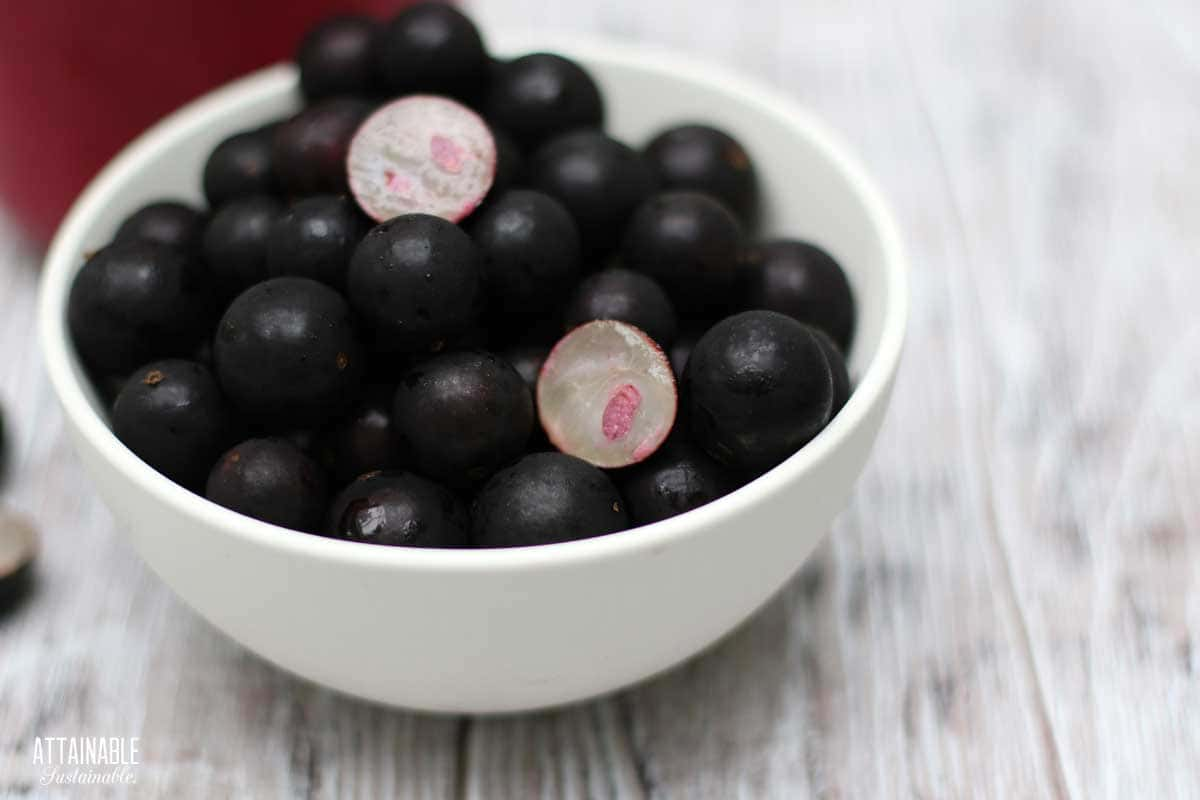
The pink spot in the center of the fruit is a seed.
Making Jaboticaba Jam
As much as we love it fresh, homemade jaboticaba jam is the way to extend the life of the fruit. The fruit is fragile and has a very short window of opportunity for harvesting. It ripens and passes its prime quickly.
What would last just days fresh can be enjoyed for a year when transformed into shelf-stable jam.
Ingredients
Jaboticaba juice/pulp – Separate the seeds and dark skins from the flesh to make a thick juice (see below for how to do it).
Sugar — Use your favorite brand of granulated cane sugar. I prefer organic.
Pectin – This recipe is made using Pomona’s Universal Pectin. This is the only pectin I use anymore as it allows me to use much less sweetener. The standard pectin brands use an obscene amount of sugar in my opinion, often requiring equal amounts of sugar and fruit! This product uses a low methoxyl method and calls for using two different ingredients, which are included in the box: pectin (the large packet) and calcium powder (the small packet). The dry pectin is mixed with the sweetener before being added to the fruit. The calcium water is added directly to the fruit.
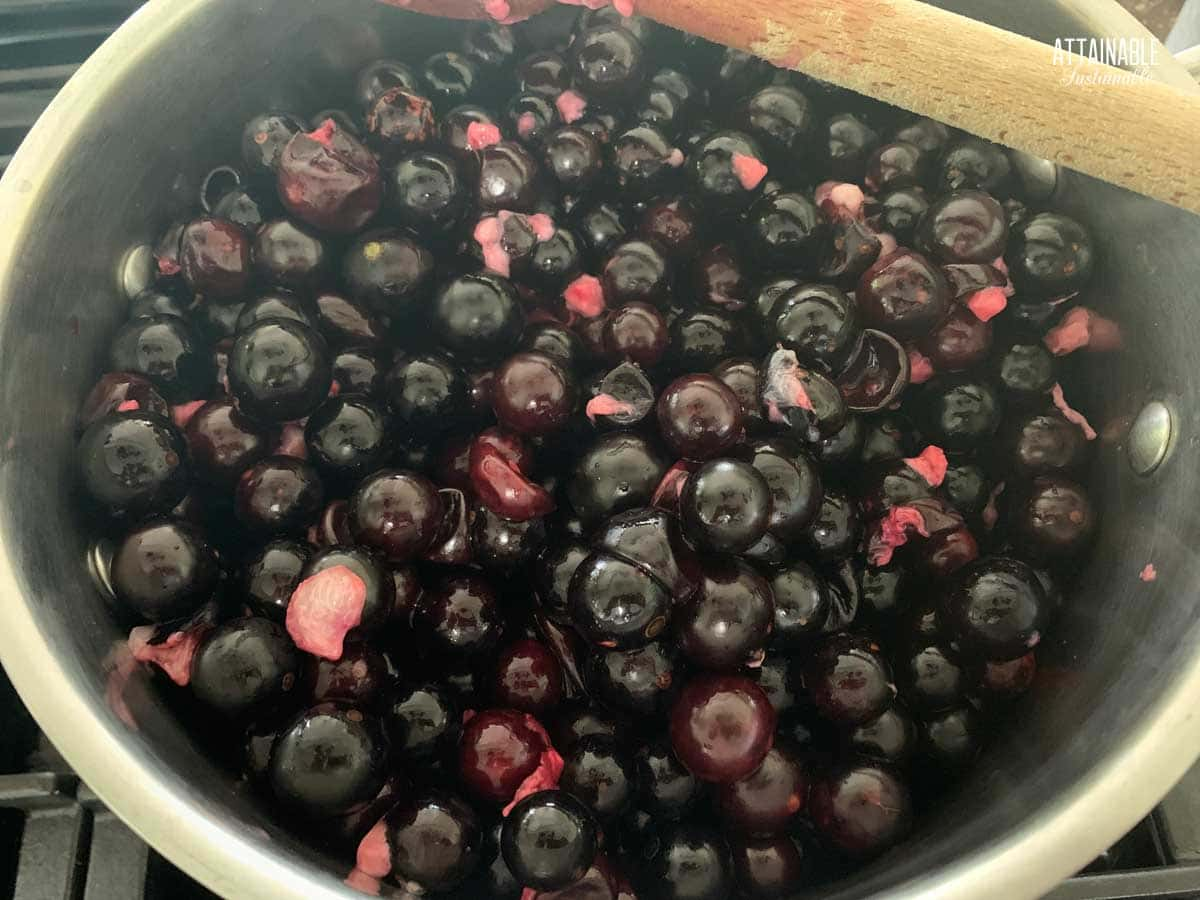
The skins begin to pop when heated.
Preparing the Fruit
The seeds of jaboticaba are about a quarter of an inch across, large enough that I remove them for making jam. I remove the skin as well; some people like to leave it in their jam. Either way is fine.
To make jam with the skins: Cut the fruit in half and manually remove the seeds. Mash the fruit into a thick pulp.
Juice the raw fruit: If you have a juicer (thanks, juicing craze), you can run the raw fruit through that.
Juice the cooked fruit: Add an inch or two of water to a cooking pot along with the jaboticaba berries. Cook over medium heat until soft and run through a food mill or sieve.
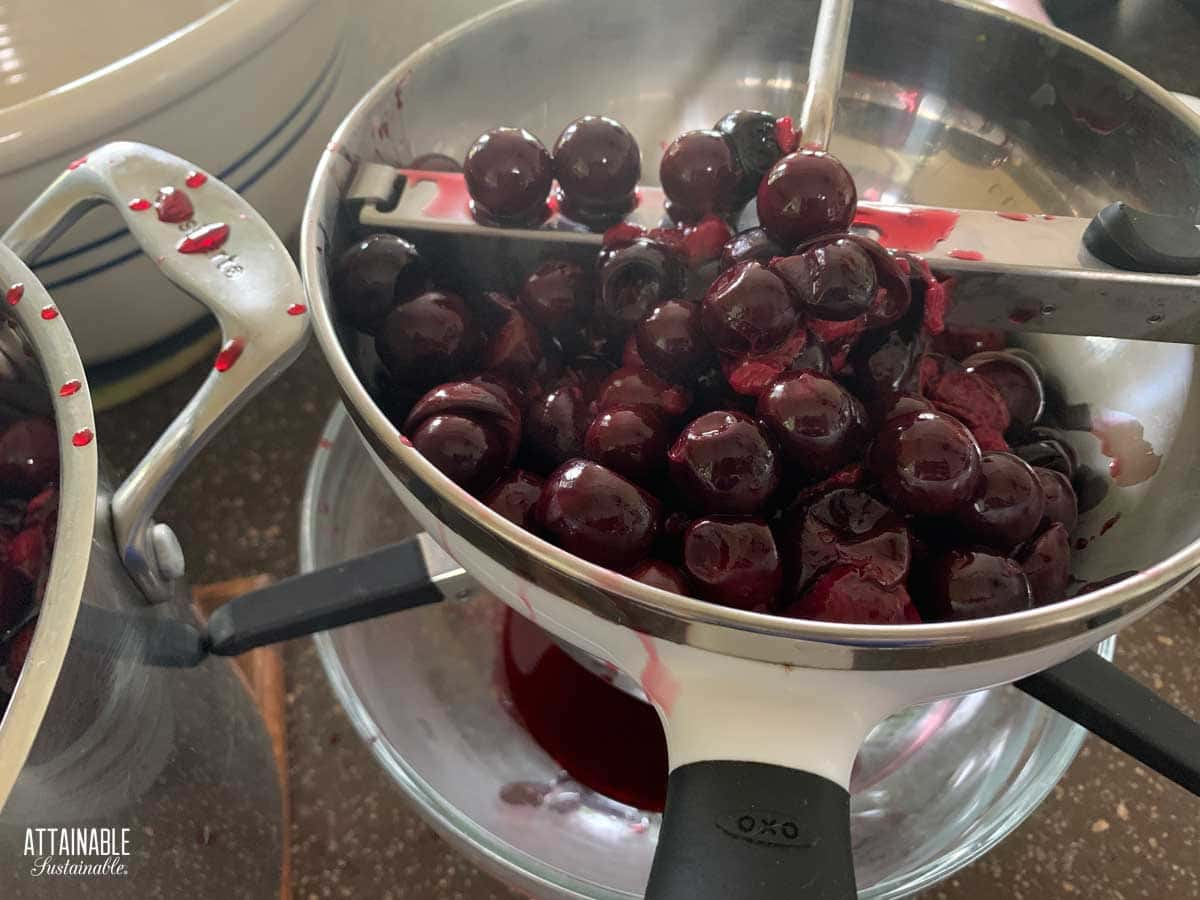
A food mill separates the seeds and skins from the pulp.
The resulting juice is a bit pulpy, which is why this is considered a jam rather than a clear jaboticaba jelly. And it’s a stunning pink color making for a gorgeous jam.
Read more about canning jams, jellies and other fruit spreads.
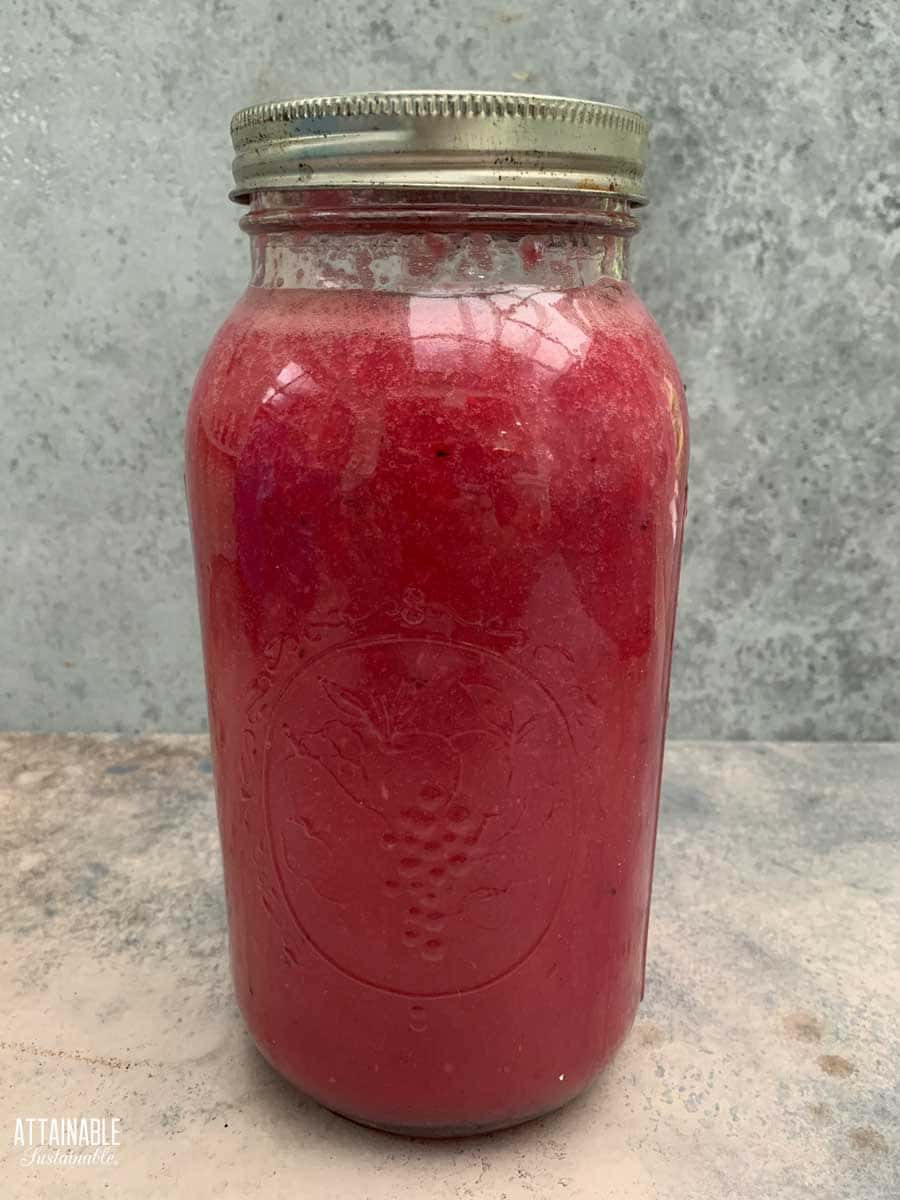
Gorgeous pink juice/pulp from the jaboticaba fruit.
Canning jam
You’ll need special canning jars, lids, and rings (read more about canning equipment here) to make this jam shelf-stable, but the process isn’t difficult.
Once you’ve cooked the juice and added sugar and pectin, transfer the mixture to canning jars, leaving a quarter-inch headspace. Top with a flat lid and canning ring, then process in a boiling water bath.
What this means is you’ll put the filled and sealed jars of jam into boiling water and heat them for ten minutes. This assures that the jars will seal well.
Remove the jars to a towel-covered countertop and allow to cool fully. As they cool, you’ll hear the little “tink” sound of the jars sealing. Store any unsealed jars in the fridge and use those first. (This is unusual, but it does happen once in awhile.)
Remove the ring from each sealed jar, rinse to remove any jam residue, and store (without the ring) in the pantry.
Here’s a more detailed look at canning jam and jelly.
🍅 Safety First!
Canning is an excellent way to preserve food for the pantry, but there are some important safety considerations to keep in mind. The recipes on this site have been made following safe canning procedures by a certified Master Food Preserver.
- Know the difference between water bath canning and pressure canning. Low acid items must be pressure canned for safety.
- Altering ingredients may change the recipe’s pH, posing a safety issue.
- Use the proper jars and lids. Never reuse lids, with the exception of the Tattler or Harvest Right hard plastic lids that are intended for such a purpose.
- For more on canning equipment, please go here.
- Want to learn more? The National Center for Home Food Preservation is the go-to resource for safe canning information.
★ Did you love this recipe? Be sure to give it a star rating below! ★

Jaboticaba Jam
Ingredients
- 8 cups jaboticaba puree
- 4 teaspoons calcium water from Pomona's Pectin package
- 1 ¾ cups sugar
- 4 teaspoon pectin from Pomona's Pectin package
Instructions
PREPARE FOR CANNING
- Prepare the calcium water: Combine ½ teaspoon calcium powder (from the small packet in the box of Pomona’s pectin) with ½ cup water in a small jar. Screw on a lit and shake until well-combined. You'll have more than you need for this recipe. Store the excess in the refrigerator for use in making additional jam or jelly recipes.
- Wash the jars you'll use, making sure each is clean and free of nicks in the rim, which could impede sealing.
- Wash the lids and rings in hot soapy water. (If you're using non-Ball brand lids, prepare as suggested by manufacturer.)
- Place empty jars in a canning pot or large stock pot with enough water to cover by an inch or two, cover pot, and set on high heat. It can take awhile for the water to heat, so get it started before you begin making the recipe.
MAKE THE JAM
- Measure the jaboticaba juice and 4 teaspoons of prepared calcium water into a large stock pot; bring to a full rolling boil. (Save the remaining calcium water in the fridge for a future batch of jam or jelly.)8 cups jaboticaba puree, 4 teaspoons calcium water
- Meanwhile, combine the sweetener with the pectin until it's thoroughly combined.1 3/4 cups sugar, 4 teaspoon pectin
- When the jaboticaba mixture comes to a boil, stir in the pectin and sweetener, stirring vigorously for 1 to 2 minutes to dissolve the pectin while bringing the jelly back to a boil. You can use your immersion blender to do this, if you have one. Otherwise, whisk vigorously to avoid lumps.
- Remove from heat when the jelly boils.
CANNING THE JAM
- Ladle hot jam into quarter-pint, half-pint, or pint sized jars, leaving 1/4" head space. A canning funnel makes this easy.
- Wipe jar rims to remove any jam that may have spilled. A clean rim is essential to a good seal.
- Set jar lids in place. Screw bands on finger tight.
- Use a jar lifter to gently place jars into hot water in a canning pot equipped with a rack. Water should cover the top of the jars by an inch. The water will cool somewhat in reaction to the addition of the jars. Return the water to a simmer and then set the timer.
- Process for 10 minutes 0-1,000 feet altitude; add an additional minute for every additional 1,000 feet in elevation.
- Remove jars from water using the jar lifter and transfer to a solid, towel-covered surface. Allow to cool for 24 hours.
- Check seals. Lids should be solid and pulled down tight. (if they flex and pop, the jar didn’t seal; put unsealed jars in the refrigerator and use those first).
- Remove rings and wash outsides of jars. Label and store in a cool, dry place.
Notes
- This recipe is made using Pomona’s Universal Pectin. This is the only pectin I use anymore as it allows me to use much less sweetener. The standard pectin brands use an obscene amount of sugar in my opinion, often requiring equal amounts of sugar and fruit! This product uses a low methoxyl method and calls for using two different ingredients, which are included in the box: pectin (the large packet) and calcium powder (the small packet).
- This jaboticaba jam tested at a pH of 3.0 making it safe for water bath canning.
- Boiling lids or heating above 180°F as once recommended can damage the sealing compound.
- SOURCE: Adapted from Pomona's Universal Pectin using the "create your own" method.
